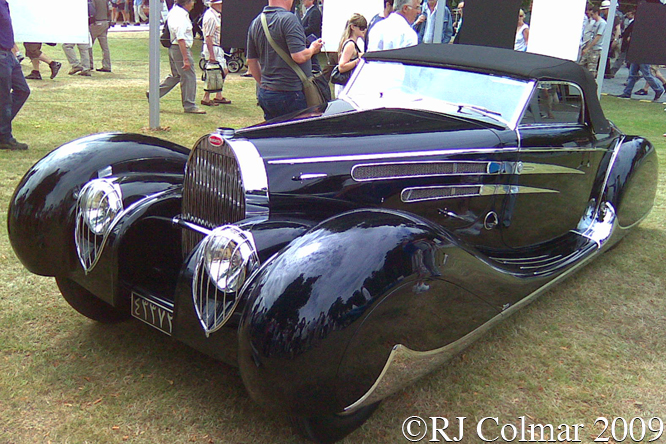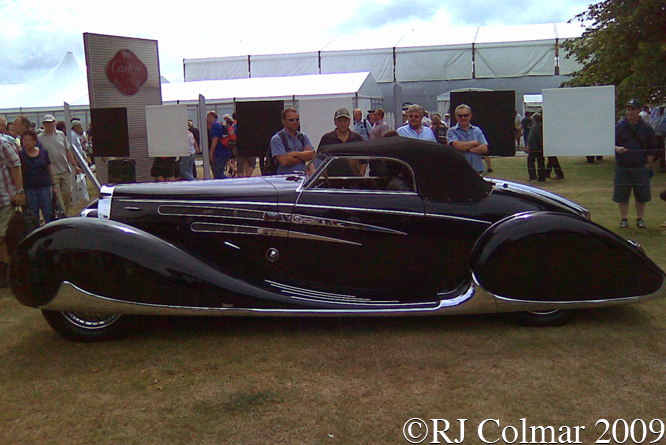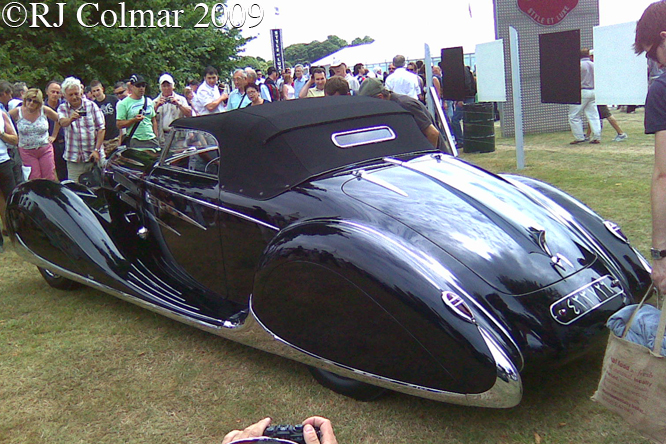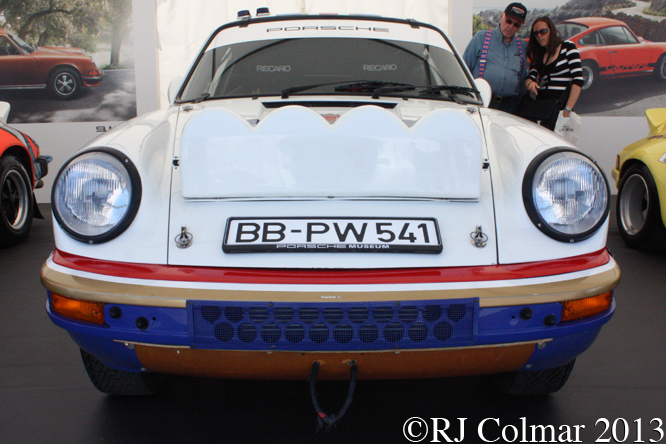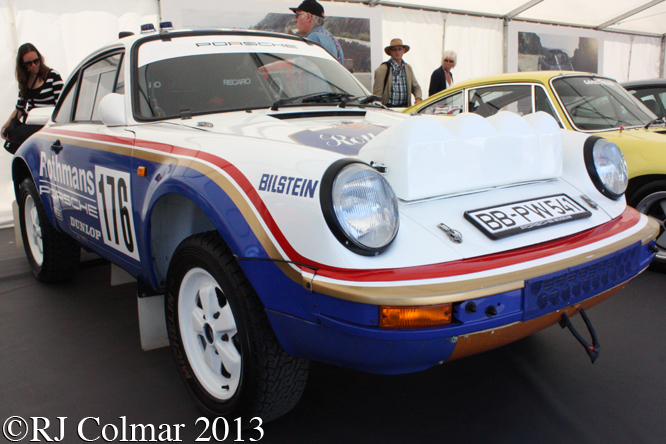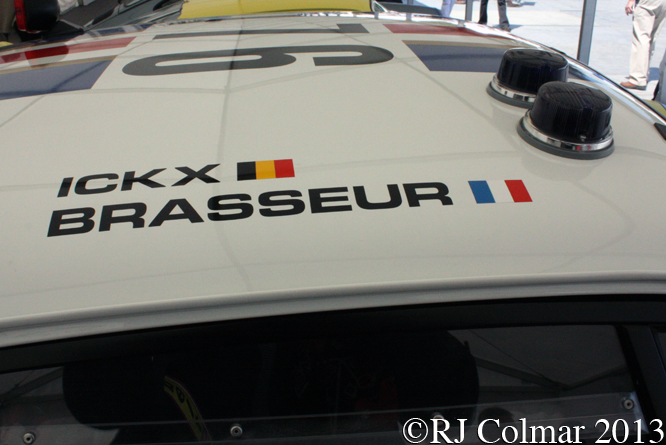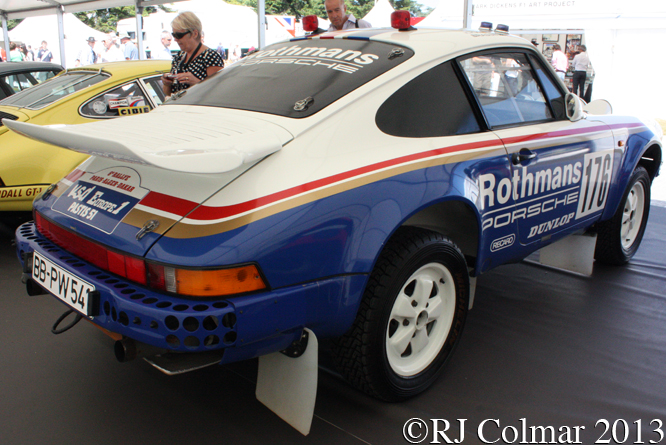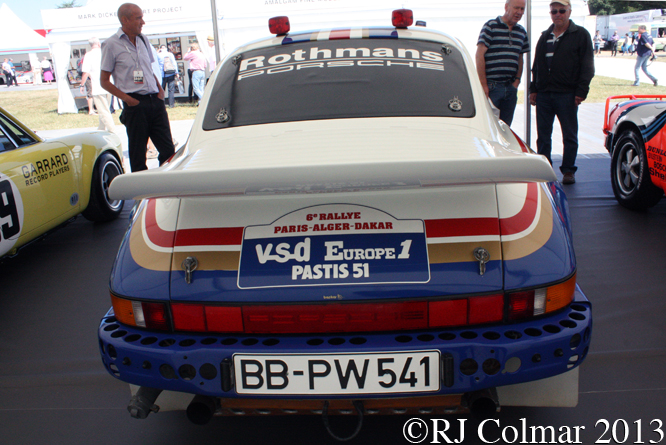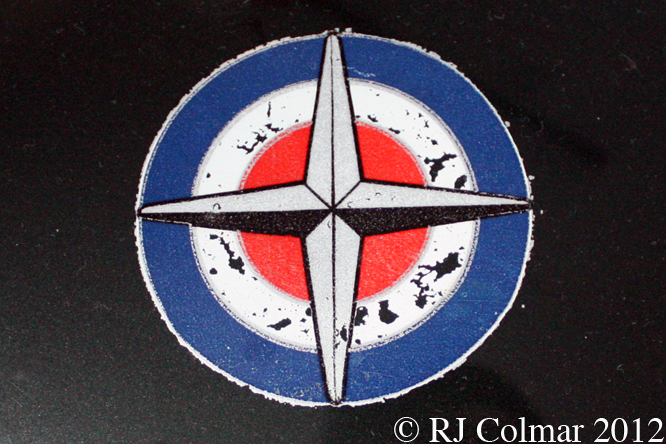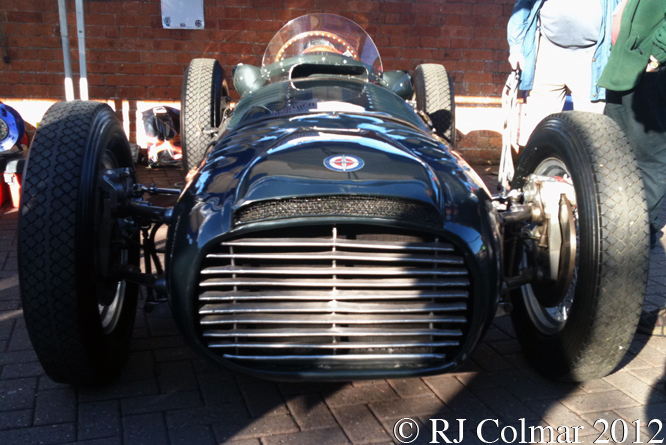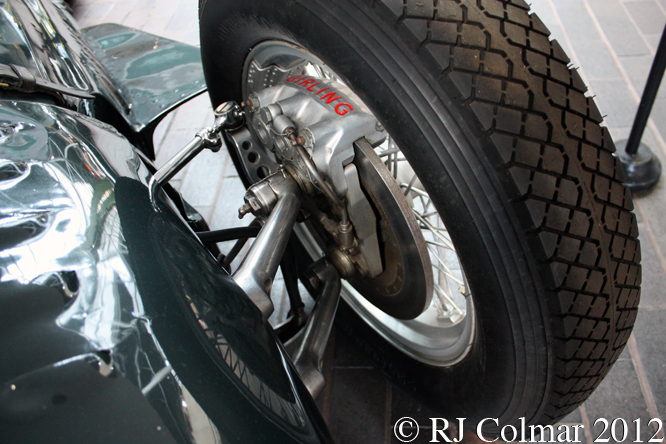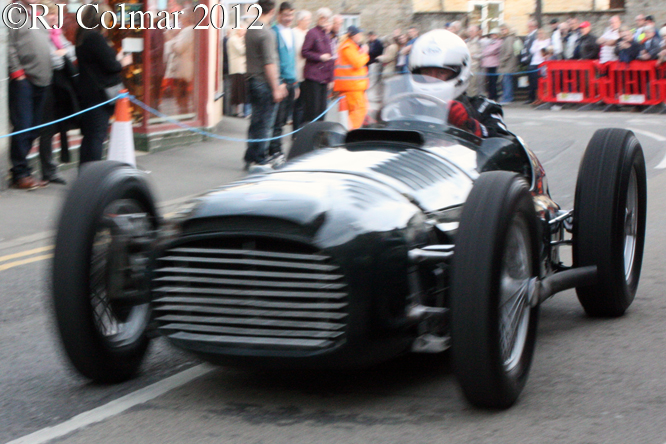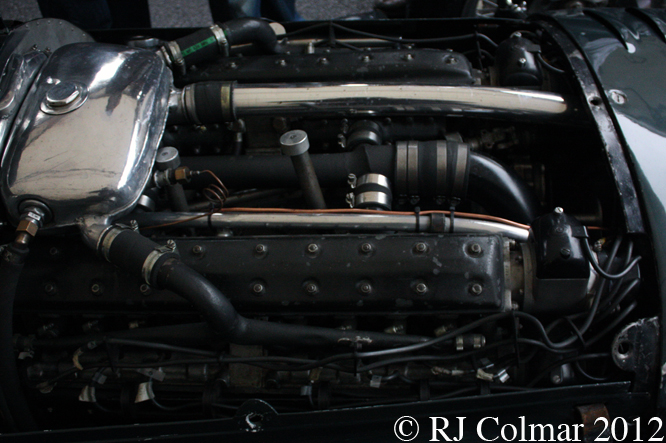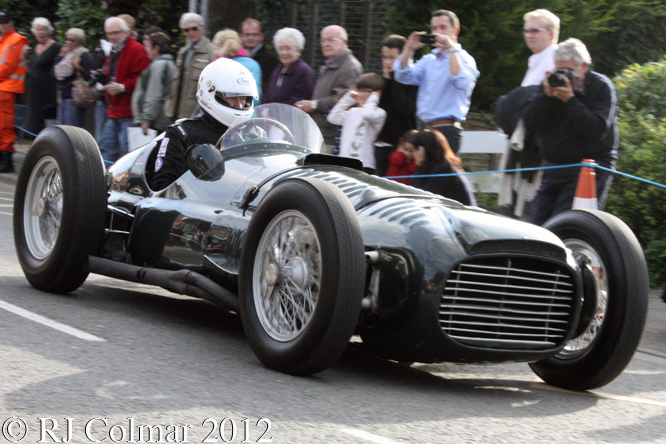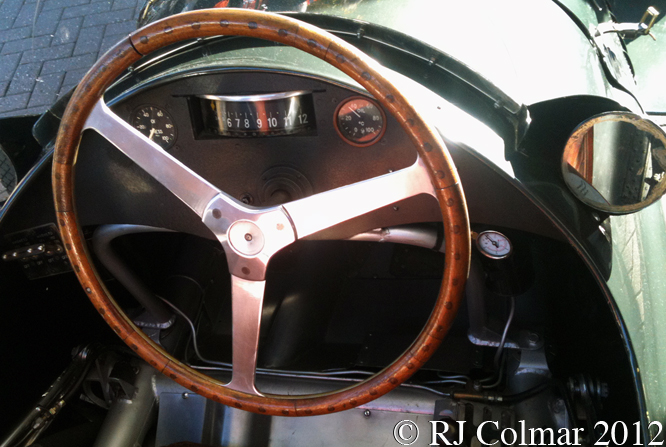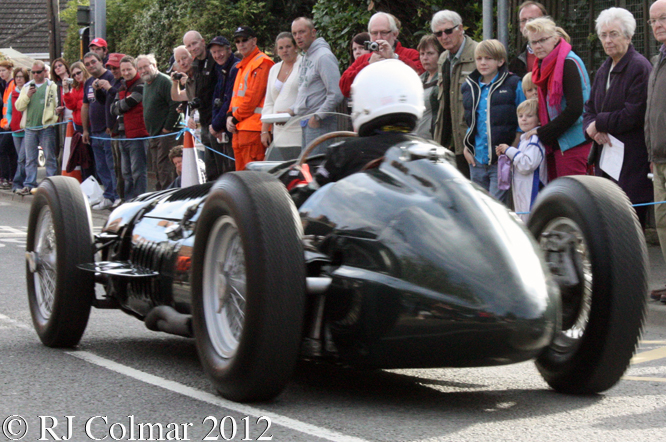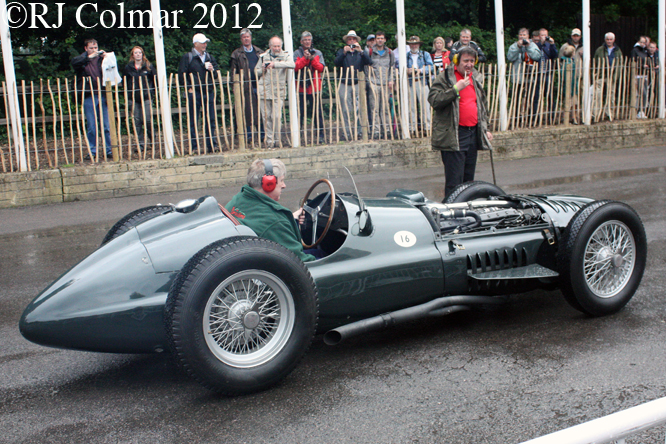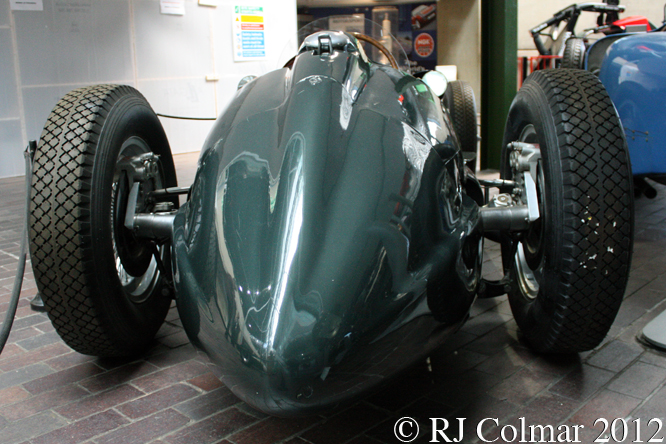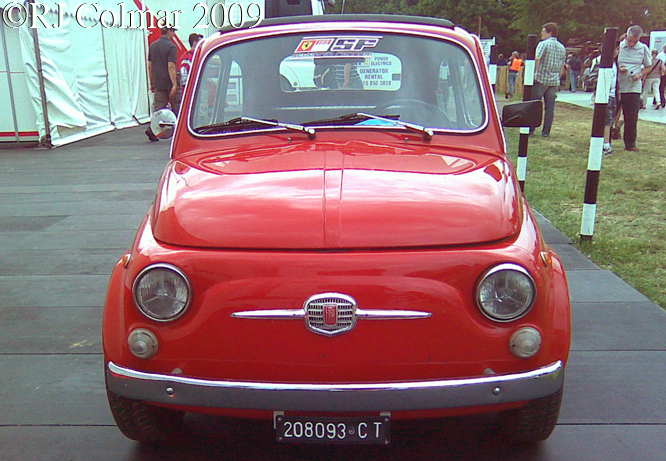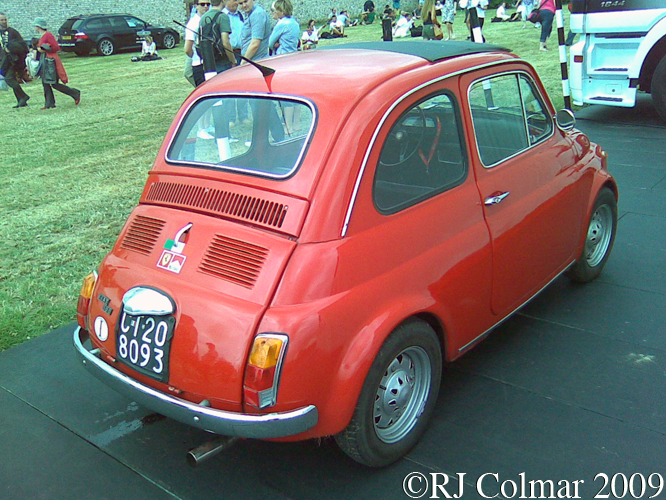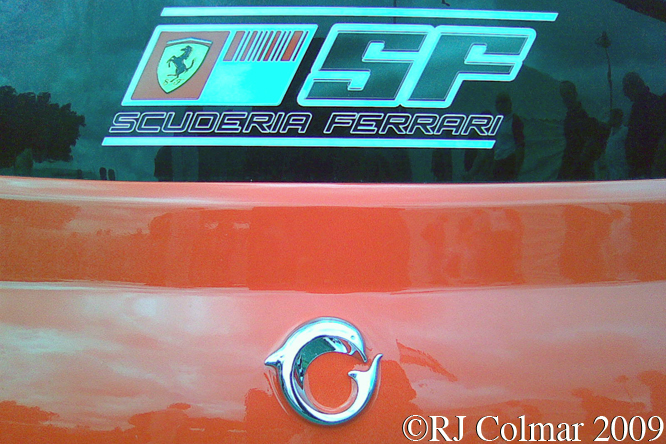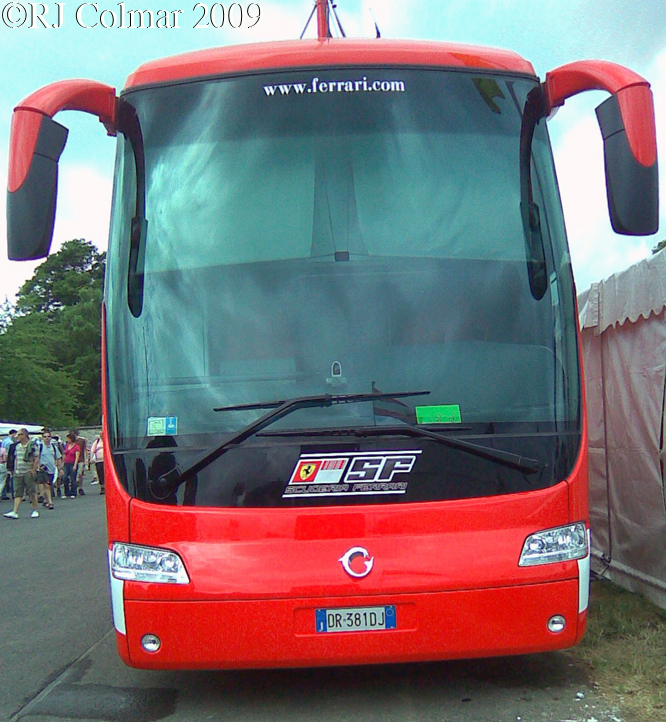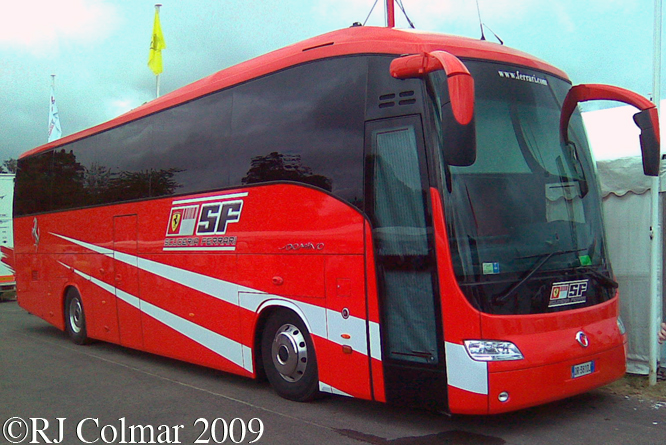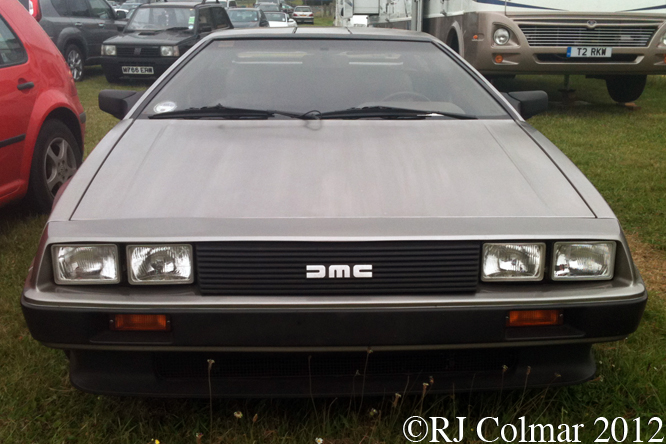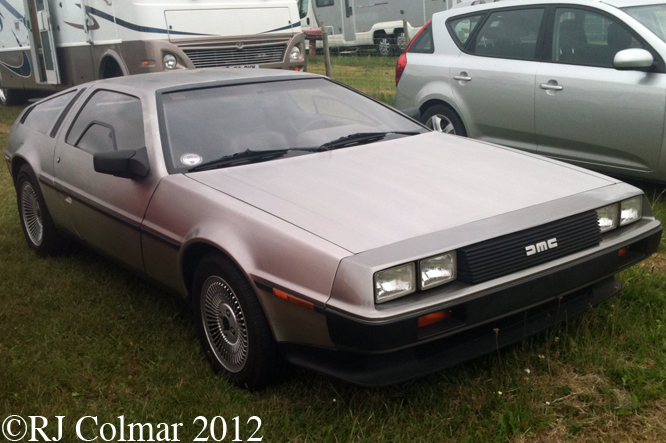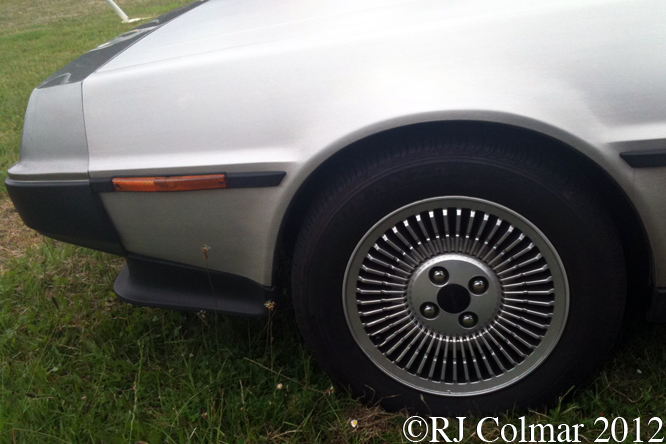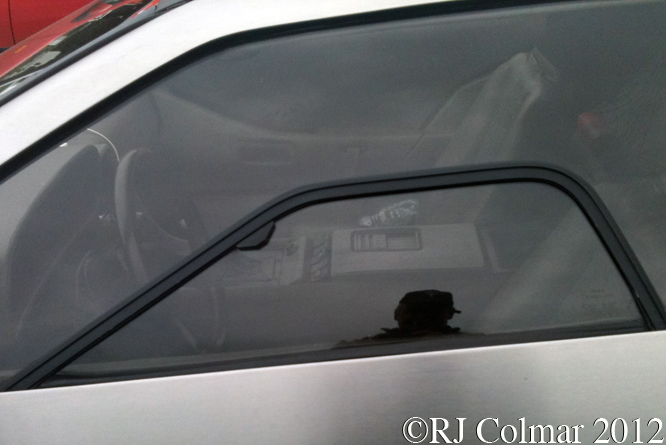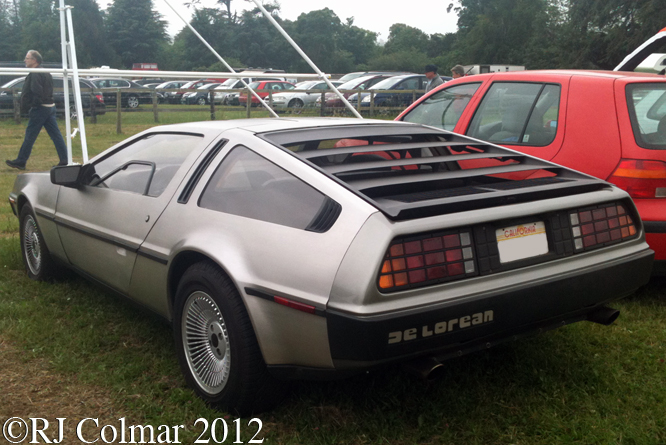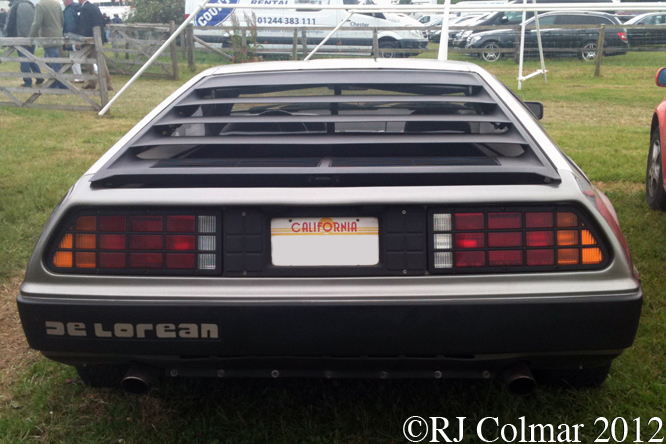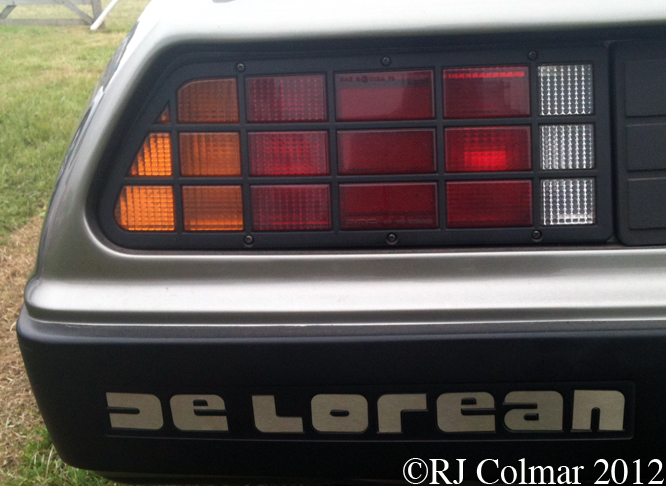To celebrate the 40th anniversary of my introduction to the wonders of The Canadian American Challenge Cup in something approximating real time mediated through the pages of ‘Motor Sport’ magazine, for the remainder of the month I’ll be featuring a selection of Group 7 race cars; on Saturday’s, Sunday’s, Mondays and the last two Thursdays of the types used in the Can Am Championships run from 1966 to 1973 or European “Intersiere” races run from 1970.
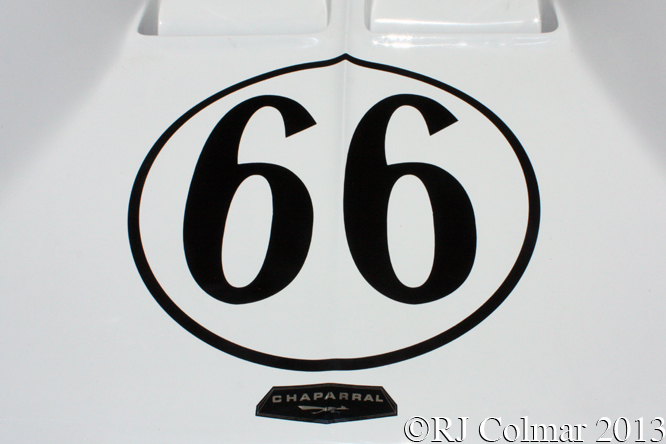
The inaugural 1966 “Can Am” Challenge race was run at St.Jovite on 11th September 1966 and won by 1965 World Drivers Champion John Surtees driving a Team Surtees Lola T 70 Spyder.
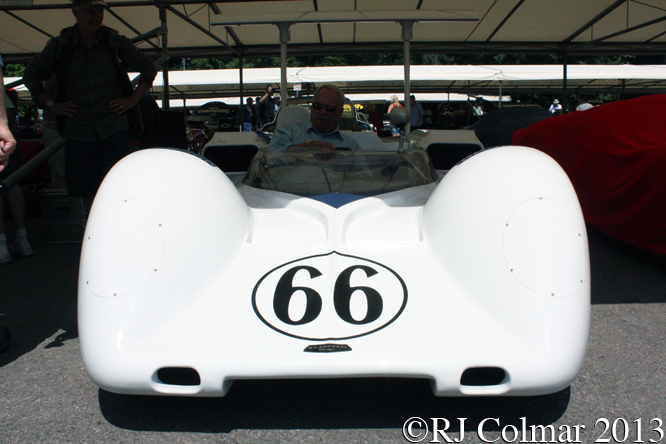
Texas Oilman and innovative engineer Jim Hall and his Chaparral team made their debut in the Series at Bridgehampton the following week where Hall was to drive the #66 Chaparral 2E chassis #2E001 with 1961 World Champion Phil Hill in the identical sister #65 chassis #2E002.
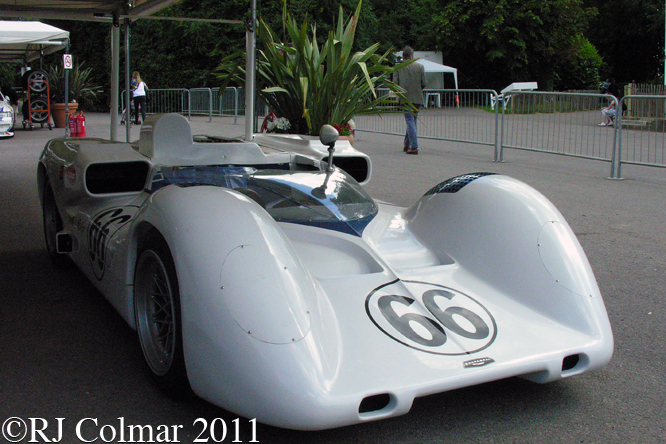
Come the start of the event it was Phil Hill who found himself at the seat of chassis #2E001 starting fourth, after Hill’s intended car developed chassis problems during practice and Jim handed the world champion Phil his own car.
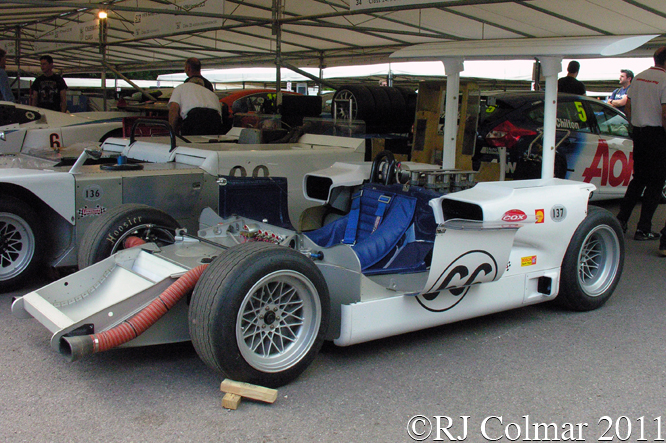
Phil finished the race in 4th place behind the Lola Ford T70 of Dan Gurney, the McLaren Elva Mark II Chevrolet driven by Chris Amon and the Mark IIb McLaren Elva Chevrolet driven by Bruce McLaren.
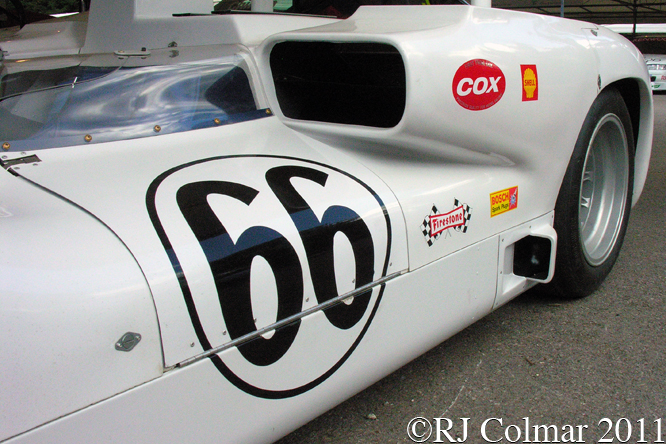
Like most vehicles of the time the Chaparral 2E featured three pedals, unlike most, the pedals operated the accelerator and brakes while the third operated a front spoiler beneath the nose and rear wing to adjust the amount of drag created to maximise the vehicles performance around the corners and along the straights of a circuit.
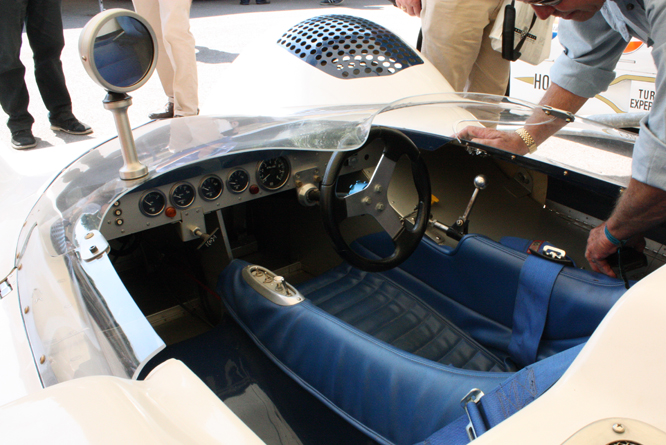
Two unusual features of the drive train were, first the 450 hp aluminium alloy block 5.4 litre / 327 cui Chevrolet V8 chosen in favour of the more powerful and heavier 5.9 litre iron block Chevrolet Motor used by John Surtees in the Lola, and second the Chaparrals were uniquely equipped automatic transmissions.
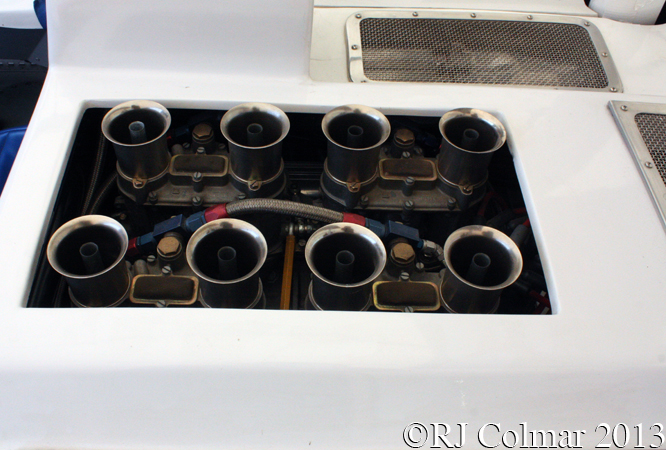
Although similar aerodynamic devices had been attached to competition vehicles before, notably by Mercedes Benz who attached a wing to the roof of their 300 SL during practice for Le Mans in 1952 and by Fritz von Opel who attached wings to the sides of his 1928 solid rocket fueled Opel RAK 2, when activated to give down force at the expense of increased drag and decreased forward speed the Chaparral 2E’s aerofoil shaped wing transmitted down force directly through the rear suspension, while a spoiler under the nose acted similarly to increase down force on the front suspension, which together improved the handling in the corners.
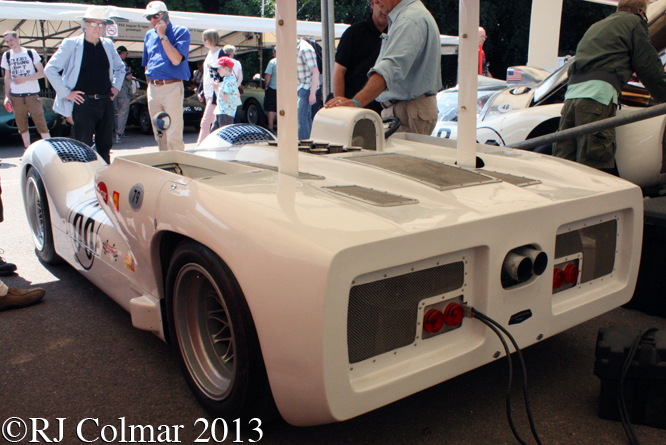
The Challenge returned to Canada one week later again on September 24th 1966 for the ‘6th Canadian Grand Prix for the Pepsi-Cola Trophy’ run Mosport Park. Hall qualified 9th and Hill 11th with Hill finishing second to Mark Donohue in a Penske run Lola Chevrolet T70. Jim retired at 1/3 rd distance with an engine problem.
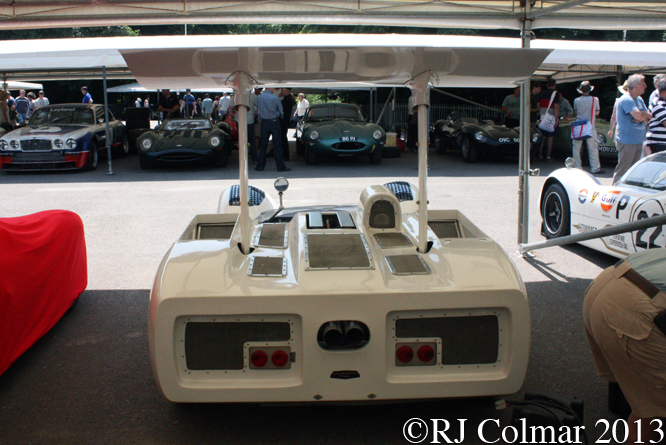
Nearly a month later on October 16th 1968 Jim Hall started the Monterey Grand Prix run at Laguna Seca from pole position in his #66 2E and alongside him on the grid was Phil Hill in the #65. After 2 hours at the wheel during which he covered 106 laps Phil Hill crossed the line first ahead of team owner Jim Hall to score a remakable team 1-2 finish.
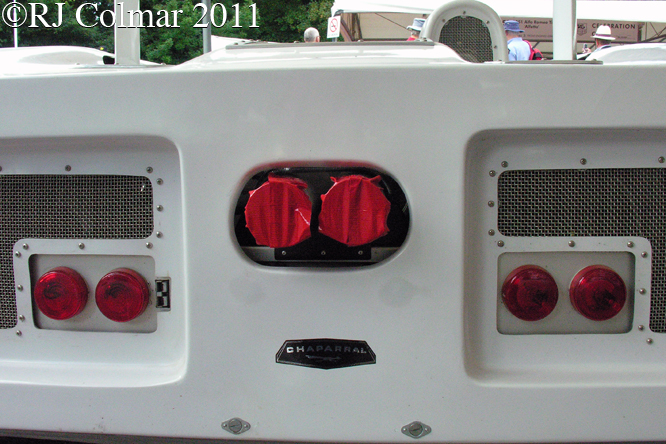
Jim qualified 3rd behind, John Surtees in the Lola, at Riverside in California. John and Jim both moved up a place after pole sitter Bruce McLaren retired with an ignition problem. Phil Hill could only qualify 8th and retired after seven laps with fuel pressure issues.
Going into the final round of the Challenge Phil Hill was tied on points with John Surtees with 5 other drivers including Jim Hall capable of winning the championship depending on a variety of finishing scenarios. Jim qualified on pole for the final round at Las Vegas but after a few laps his wing started flapping uncontrollably due to fatigue failure in the control mechanism causing his retirement from second after Surtees took a dominant lead from the start. Hill damaged his car and ran much of the race scraping over 4th place until his wing also failed. Surtees easily won the race and the Inaugural Can Am title ahead of Mark Donohue with Hill finishing out of the points his championnship chances were shot.
A Chaparral 2E chassis 2E002 was entered in three events at the 13th Bahamas National Speed Weeks for Jim Halls Chaparral Cars Inc partner Hap Sharp. Hap won the Governor’s Trophy & Nassau Tourist Trophy from pole, finished 5th in the Nassau Classic Race and a non running 4th, again from pole in the Nassau Trophy Race in which Hap had an accident.
In 2005 Jim Hall teamed up with Jim Musser, who had contributed to the design of the 2E, known to be Hall’s favourite, to build a ‘limited number’ of continuation Chaparral 2E’s for use by classic racers. More on the continuation cars can be seen on this link to the Chaparral Official Website.
My thanks to Kayemod Rob, Tony 2F-001 Pashley, Supersox and Allen Brown Duc-man and mariner at The Nostalgia Forum for helping me to conclude that the car featured today maybe the surviving original 2E but is most likely one of two continuation models.
Thanks for joining me on this Jim’s Favourite edition of “Gettin a li’l psycho on tyres”, I hope you will join me again tomorrow when I’ll be looking at a Can Am Lola T70 Spyder. Don’t forget to come back now !

